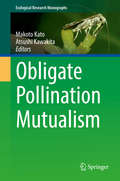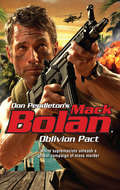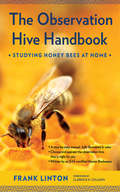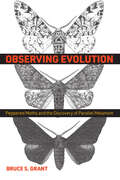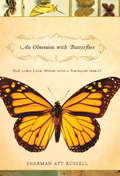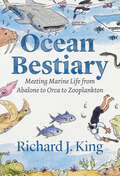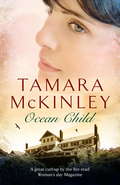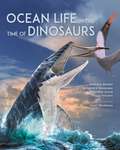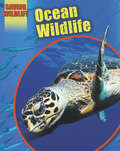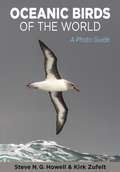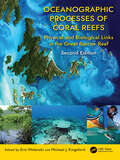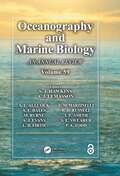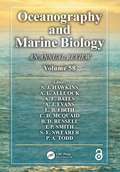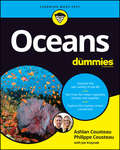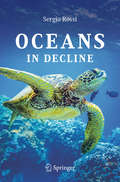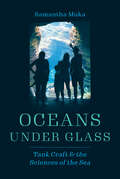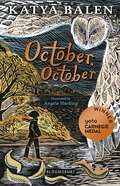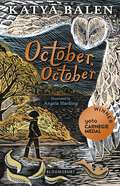- Table View
- List View
Obligate Pollination Mutualism (Ecological Research Monographs)
by Makoto Kato Atsushi KawakitaThis book presents a comprehensive overview of our current understanding of mutualism origin, plant–pollinator specificity, mutualism stability, and reciprocal diversification. In particular, it focuses on the natural history and evolutionary history of the third example of obligate pollination mutualism, leafflower–leafflower moth association, which was discovered in the plant family Phyllanthaceae by the lead editor and then established by the editors and their coworkers as an ideal model system for studies of mutualism and the coevolutionary process. This work brings together the knowledge they have gained through an array of research conducted using different approaches, ranging from taxonomy, phylogenetics, ecology, and evolutionary biology to biogeography.Richly illustrated with numerous original color photographs, the volume consists of 13 chapters and is divided into three main parts: natural history, ecology, and evolution. It begins by showcasing numerous examples of plant–animal interactions and their origins to guide readers in the world of leafflowers and their pollinators. The immense diversity of Phyllanthaceae and pollinator moths is then explored, and in the following 7 chapters mutualism is discussed from a range of ecological and evolutionary points of view. The final chapter presents a review of the evolution and variety of obligate pollination mutualisms.This book offers researchers and students in the field of ecology, botany, evolutionary biology, pollination biology, entomology, and tropical biology fascinating insights into why such a costly pollination system has evolved and why Phyllanthaceae is so diverse despite the inconspicuousness of their flowers.
The Observation Hive Handbook: Studying Honey Bees at Home
by Frank LintonThis book will guide you in selecting an observation hive and choosing a site for it, modifying the hive and the site as needed, installing the hive, working with the hive, and maintaining the hive. It will prepare you to take a temporary portable observation hive to a market, fair, or school. Most important, it describes and illustrates the many ways you can use your observation hive to learn more about honey bees and how to care for them.
Observing Evolution: Peppered Moths and the Discovery of Parallel Melanism
by Bruce S. GrantA firsthand account of how a modest moth demonstrated Darwin's theory of natural selection.The extraordinary tale of the humble peppered moth is at the very foundation of our acceptance of Darwinian evolution. When scientists in the early twentieth century discovered that a British population of the small, speckled Biston betularia had become black over the course of mere decades in response to the Industrial Revolution's encroaching soot, the revelation cemented Darwin's theory of natural selection. This finding was the staple example of "evolution in action" until the turn of the millennium, when proponents of Creationism fomented doubts about the legitimacy of early experiments. In the midst of this upheaval, evolutionary biologist Bruce S. Grant and his contemporaries were determinedly building a dataset that would ultimately vindicate the theory of industrial melanism in the peppered moth and, by extension, the theory of natural selection itself. Observing Evolution tells the remarkable story of this work. Shining a light on the efforts of scientists who tested Darwin's trailblazing theory, Grant chronicles the historical foundations of peppered moth research, then explains how he and his collaborators were able to push this famous study forward. He describes how his experiments were designed and conducted while painting a vivid picture of the personalities, events, and adventures around the world that shaped his successes—and struggles. His story culminates with his discovery of the mirrored "rise and fall" of melanism in peppered moth populations separated by the vastness of the Atlantic Ocean, which settled the intense controversy around evolution by documenting nature's recurring experiment. Observing Evolution is a crash course in natural selection and the history of evolutionary biology for anyone interested in Darwin's legacy. It's also a fascinating read for lepidopterists and scientists about the bridge between classic experiments and today's sophisticated DNA sequencing, which reveals in ever greater detail how the lives of these tiny organisms have such enormous implications.
An Obsession With Butterflies: Our Long Love Affair With A Singular Insect
by Sharman Apt RussellButterflies have always served as a metaphor for resurrection and transformation, but as Sharman Apt Russell points out in this lyrical meditation, butterflies are above all objects of obsession. She reveals the logic behind our endless fascination with butterflies and introduces us to the legendary collectors and dedicated scientists who have obsessively catalogued new species of Lepidoptera. A luminous journey through an exotic world of passion and strange beauty, this is a book to be treasured by anyone who has ever experienced the enchantment of butterflies.
Ocean Bestiary: Meeting Marine Life from Abalone to Orca to Zooplankton (Oceans in Depth)
by Richard J. KingA delightful A-to-Z menagerie of the sea—whimsically illustrated, authoritative, and thought-provoking. For millennia, we have taken to the waves. And yet, for humans, the ocean remains our planet’s most inaccessible region, the place about which we know the least. From A to Z, abalone to zooplankton, and through both text and original illustrations, Ocean Bestiary is a celebration of our ongoing quest to know the sea and its creatures. Focusing on individual species or groups of animals, Richard J. King embarks upon a global tour of ocean wildlife, including beluga whales, flying fish, green turtles, mako sharks, noddies, right whales, sea cows (as well as sea lions, sea otters, and sea pickles), skipjack tuna, swordfish, tropicbirds, walrus, and yellow-bellied sea snakes. But more than this, King connects the natural history of ocean animals to the experiences of people out at sea and along the world’s coastlines. From firsthand accounts passed down by the earliest Polynesian navigators to observations from Wampanoag clamshell artists, African-American whalemen, Korean female divers (or haenyeo), and today’s pilots of deep-sea submersibles—and even to imaginary sea expeditions launched through poems, novels, and paintings—Ocean Bestiary weaves together a diverse array of human voices underrepresented in environmental history to tell the larger story of our relationship with the sea. Sometimes funny, sometimes alarming, but always compelling, King’s vignettes reveal both how our perceptions of the sea have changed for the better and how far we still have to go on our voyage.
Ocean Bestiary: Meeting Marine Life from Abalone to Orca to Zooplankton (Oceans in Depth)
by Richard J. KingA delightful A-to-Z menagerie of the sea—whimsically illustrated, authoritative, and thought-provoking. For millennia, we have taken to the waves. And yet, for humans, the ocean remains our planet’s most inaccessible region, the place about which we know the least. From A to Z, abalone to zooplankton, and through both text and original illustrations, Ocean Bestiary is a celebration of our ongoing quest to know the sea and its creatures. Focusing on individual species or groups of animals, Richard J. King embarks upon a global tour of ocean wildlife, including beluga whales, flying fish, green turtles, mako sharks, noddies, right whales, sea cows (as well as sea lions, sea otters, and sea pickles), skipjack tuna, swordfish, tropicbirds, walrus, and yellow-bellied sea snakes. But more than this, King connects the natural history of ocean animals to the experiences of people out at sea and along the world’s coastlines. From firsthand accounts passed down by the earliest Polynesian navigators to observations from Wampanoag clamshell artists, African-American whalemen, Korean female divers (or haenyeo), and today’s pilots of deep-sea submersibles—and even to imaginary sea expeditions launched through poems, novels, and paintings—Ocean Bestiary weaves together a diverse array of human voices underrepresented in environmental history to tell the larger story of our relationship with the sea. Sometimes funny, sometimes alarming, but always compelling, King’s vignettes reveal both how our perceptions of the sea have changed for the better and how far we still have to go on our voyage.
Ocean Child
by Tamara McKinley1920. Having disobeyed the wishes of her aristocratic family, Lulu Pearson, a young and talented Tasmanian sculptress, finds herself alone in London in the wake of the Great War. The future is looking bright until, on the eve of her first exhibition, Lulu learns she has inherited a racing colt called Ocean Child from a mysterious benefactor, and she must return to her homeland to claim him. Baffled by the news, Lulu boards a ship to Tasmania to uncover the truth behind the strange bequest, but it seems a welcome return is more than she can hope for. Unbeknownst to Lulu, more than a few fortunes ride on Ocean Child's success - it seems everyone from her estranged mother to the stable hands has a part to play, and an interest in keeping the family secrets buried.
Ocean Life in the Time of Dinosaurs
by Nathalie Bardet Alexandra Houssaye Stéphane Jouve Peggy VincentA richly illustrated introduction to the spectacular reptiles that swam the oceans when dinosaurs roamed the landDuring the Mesozoic era, 252 to 66 million years ago, dinosaurs ruled the land, but the ocean deeps were roiling with equally spectacular reptiles—including giant predators. This richly illustrated, authoritative, and accessible book introduces readers to the world of these fascinating marine animals, whose predecessors returned to the seas a few million years after the first vertebrates emerged from the water. As we meet ichthyosaurs, plesiosaurs, mosasaurs, and many others, we learn about the astonishing anatomical, physiological, and behavioral adaptations that enabled these reptiles to become ocean dwellers again. We also learn about their living descendants, including sea turtles and sea snakes. Featuring stunning artwork depicting these prehistoric ocean creatures and photographs of their fossil remains, this book invites readers to discover the enthralling past of marine reptiles in all their extraordinary diversity.
Ocean Life in the Time of Dinosaurs
by Nathalie Bardet Alexandra Houssaye Stéphane Jouve Peggy VincentA richly illustrated introduction to the spectacular reptiles that swam the oceans when dinosaurs roamed the landDuring the Mesozoic era, 252 to 66 million years ago, dinosaurs ruled the land, but the ocean deeps were roiling with equally spectacular reptiles—including giant predators. This richly illustrated, authoritative, and accessible book introduces readers to the world of these fascinating marine animals, whose predecessors returned to the seas a few million years after the first vertebrates emerged from the water. As we meet ichthyosaurs, plesiosaurs, mosasaurs, and many others, we learn about the astonishing anatomical, physiological, and behavioral adaptations that enabled these reptiles to become ocean dwellers again. We also learn about their living descendants, including sea turtles and sea snakes. Featuring stunning artwork depicting these prehistoric ocean creatures and photographs of their fossil remains, this book invites readers to discover the enthralling past of marine reptiles in all their extraordinary diversity.
Ocean Wildlife (Saving Wildlife)
by Sonya NewlandOcean Wildlife investigates how climate change, overfishing and pollution affect the creatures that inhabit our underwater world, and looks at what is being done to repopulate our oceans.It is part of the Saving Wildlife series, which investigates the world's endangered species in the context of their different environments.
Oceanic Birds of the World: A Photo Guide
by Howell Steve G. Kirk ZufeltA state-of-the-art photographic field guide to the world's oceanic birdsOceanic birds are among the most remarkable but least known of all birds, living at sea, far from the sight of most people. They offer unusual identification challenges—many species look similar and it can be difficult to get good views of fast-flying birds from a moving boat. The first field guide to the world's oceanic birds in more than two decades, this exciting and authoritative book draws on decades of firsthand experience on the open seas. It features clear text filled with original insights and new information and more than 2,200 carefully chosen color images that bring the ocean and its remarkable winged inhabitants to life. Never before have oceanic birds been presented in such an accessible and comprehensive way.The introduction discusses the many recent developments in seabird taxonomy, which are incorporated into the species accounts, and these accounts are arranged into groups that aid field identification. Each group and species complex has an introductory overview of its identification challenges, illustrated with clear comparative photos. The text describes flight manner, plumage variation related to age and molt, seasonal occurrence patterns, migration routes, and many other features.The result is an indispensable guide for exploring birding's last great frontier.A comprehensive, authoritative, and accessible guide to oceanic birdsCovers more than 270 speciesIncludes more than 2,200 color photos with concise captions noting key featuresFeatures careful species comparisons, overviews of the latest taxonomy, tips on how to observe and ID birds at sea, and much more
Oceanographic Processes of Coral Reefs: Physical and Biological Links in the Great Barrier Reef
by Eric Wolanski Michael J. KingsfordIn the last two decades since publication of the first edition, substantial advancements have been made in the science, the need for transdisciplinary approaches to coral reef protection greater than ever before. This new edition, now in full color throughout with accompanying animations, goes beyond identifying foundational information and current problems to pinpoint science-based solutions for managers, stakeholders and policy makers. Coral reefs are connected by currents that carry plankton and the larvae of many reef-based organisms. Further, they supply food to reefs. Currents also bring pollutants from the land and, together with the atmosphere, affect the surrounding ocean. The chapters in this book provide a much-needed review of the biophysics of reefs with an emphasis on the Great Barrier Reef as an ecosystem. The focus is on interactions between currents, waves, sediment and the dynamics of coastal and reef-based ecosystems. The topographic complexity of reefs redirects mainstream currents, creates tidal eddies, mushroom jets, boundary layers, stagnation zones, and this turbulence is enhanced by the oceanographic chaos in the adjoining Coral Sea. This is the environment in which particles and organisms, of a range of sizes live, from tiny plankton to megafauna. This generates faunal connectivity at scales of meters to thousands of km within the Great Barrier Reef and with the adjoining ocean. Pollution from land-use is increasing and remedial measures are described both on land and on coral cays. The impact of climate change is quantified in case studies about mangroves and corals. Modelling this biophysical complexity is increasing in sophistication, and the authors suggest how the field can advance further.
Oceanographic Processes of Coral Reefs: Physical and Biological Links in the Great Barrier Reef
In the last two decades since publication of the first edition, substantial advancements have been made in the science, the need for transdisciplinary approaches to coral reef protection greater than ever before. This new edition, now in full color throughout with accompanying animations, goes beyond identifying foundational information and current problems to pinpoint science-based solutions for managers, stakeholders and policy makers. Coral reefs are connected by currents that carry plankton and the larvae of many reef-based organisms. Further, they supply food to reefs. Currents also bring pollutants from the land and, together with the atmosphere, affect the surrounding ocean. The chapters in this book provide a much-needed review of the biophysics of reefs with an emphasis on the Great Barrier Reef as an ecosystem. The focus is on interactions between currents, waves, sediment and the dynamics of coastal and reef-based ecosystems. The topographic complexity of reefs redirects mainstream currents, creates tidal eddies, mushroom jets, boundary layers, stagnation zones, and this turbulence is enhanced by the oceanographic chaos in the adjoining Coral Sea. This is the environment in which particles and organisms, of a range of sizes live, from tiny plankton to megafauna. This generates faunal connectivity at scales of meters to thousands of km within the Great Barrier Reef and with the adjoining ocean. Pollution from land-use is increasing and remedial measures are described both on land and on coral cays. The impact of climate change is quantified in case studies about mangroves and corals. Modelling this biophysical complexity is increasing in sophistication, and the authors suggest how the field can advance further.
Oceanography and Marine Biology: An Annual Review, Volume 56 (Oceanography and Marine Biology - An Annual Review)
by S. J. HawkinsOceanography and Marine Biology: An Annual Review remains one of the most cited sources in marine science and oceanography. The ever-increasing interest in work in oceanography and marine biology and its relevance to global environmental issues, especially global climate change and its impacts, creates a demand for authoritative refereed reviews summarizing and synthesizing the results of recent research. If you are interested in submitting a review for consideration for publication in OMBAR, please email the Editor in Chief, Stephen Hawkins, at S.J.Hawkins@soton.ac.uk. For nearly 60 years, OMBAR has been an essential reference for research workers and students in all fields of marine science. This volume considers such diverse topics as the Great Barrier Reef Expedition of 1928-29, Mediterranean marine caves, macromedusae in eastern boundary currents, marine biodiversity in Korea, and development of a geo-ecological carbonate reef system model to predict responses of reefs to climate change. Seven of the peer-reviewed contributions in Volume 59 are available to read Open Access on this webpage (1, 2, 3, 4, 5, 6 and 9). An international Editorial Board ensures global relevance and expert peer review, with editors from Australia, Canada, Hong Kong, Ireland, Singapore and the United Kingdom. The series volumes find a place in the libraries of not only marine laboratories and oceanographic institutes, but also universities worldwide.
Oceanography and Marine Biology: An annual review. Volume 58 (Oceanography and Marine Biology - An Annual Review #58)
by S. J. Hawkins C. McQuaid A. L. Allcock A. E. Bates L. B. Firth I. P. Smith S. Swearer A. Evans P. Todd B. RussellOceanography and Marine Biology: An Annual Review remains one of the most cited sources in marine science and oceanography. The ever-increasing interest in work in oceanography and marine biology and its relevance to global environmental issues, especially global climate change and its impacts, creates a demand for authoritative refereed reviews summarizing and synthesizing the results of recent research. For more than 50 years, OMBAR has been an essential reference for research workers and students in all fields of marine science. If you are interested in submitting a review for consideration for publication in OMBAR, please email the Editor in Chief, Stephen Hawkins, at S.J.Hawkins@soton.ac.uk. This volume considers such diverse topics as optimal design for ecosystem-level ocean observatories, the oceanography and ecology of Ningaloo, human pressures and the emergence of novel marine ecosystems and priority species to support the functional integrity of coral reefs. Six of the nine peer-reviewed contributions in Volume 58 are available to read Open Access via the links on the Routledge.com webpage. An international Editorial Board ensures global relevance and expert peer review, with editors from Australia, Canada, Hong Kong, Ireland, Singapore, South Africa and the United Kingdom. The series volumes find a place in the libraries of not only marine laboratories and oceanographic institutes, but also universities worldwide. Chapters 1, 2, 3, 4, 5, 7, and 8 of this book are freely available as downloadable Open Access PDFs at http://www.taylorfrancis.com under a Creative Commons Attribution-Non Commercial-No Derivatives (CC-BY-NC-ND) 4.0 license.
Oceanography and Marine Biology: An annual review. Volume 58 (Oceanography and Marine Biology - An Annual Review #58)
by S. J. Hawkins, A. L. Allcock, A. E. Bates, A. J. Evans, L. B. Firth, C. D. McQuaid, B. D. Russell, I. P. Smith, S. E. Swearer, and P. A. ToddOceanography and Marine Biology: An Annual Review remains one of the most cited sources in marine science and oceanography. The ever-increasing interest in work in oceanography and marine biology and its relevance to global environmental issues, especially global climate change and its impacts, creates a demand for authoritative refereed reviews summarizing and synthesizing the results of recent research. For more than 50 years, OMBAR has been an essential reference for research workers and students in all fields of marine science. If you are interested in submitting a review for consideration for publication in OMBAR, please email the Editor in Chief, Stephen Hawkins, at S.J.Hawkins@soton.ac.uk. This volume considers such diverse topics as optimal design for ecosystem-level ocean observatories, the oceanography and ecology of Ningaloo, human pressures and the emergence of novel marine ecosystems and priority species to support the functional integrity of coral reefs. Six of the nine peer-reviewed contributions in Volume 58 are available to read Open Access via the links on the Routledge.com webpage. An international Editorial Board ensures global relevance and expert peer review, with editors from Australia, Canada, Hong Kong, Ireland, Singapore, South Africa and the United Kingdom. The series volumes find a place in the libraries of not only marine laboratories and oceanographic institutes, but also universities worldwide. Chapters 1, 2, 3, 4, 5, 7, and 8 of this book are freely available as downloadable Open Access PDFs at http://www.taylorfrancis.com under a Creative Commons Attribution-Non Commercial-No Derivatives (CC-BY-NC-ND) 4.0 license.
Oceanography and Marine Biology: An Annual Review, Volume 59 (Oceanography and Marine Biology - An Annual Review)
by S. J. HawkinsOceanography and Marine Biology: An Annual Review remains one of the most cited sources in marine science and oceanography. The ever-increasing interest in work in oceanography and marine biology and its relevance to global environmental issues, especially global climate change and its impacts, creates a demand for authoritative refereed reviews summarizing and synthesizing the results of recent research. If you are interested in submitting a review for consideration for publication in OMBAR, please email the Editor in Chief, Stephen Hawkins, at S.J.Hawkins@soton.ac.uk. For nearly 60 years, OMBAR has been an essential reference for research workers and students in all fields of marine science. This volume considers such diverse topics as the Great Barrier Reef Expedition of 1928-29, Mediterranean marine caves, macromedusae in eastern boundary currents, marine biodiversity in Korea, and development of a geo-ecological carbonate reef system model to predict responses of reefs to climate change. Seven of the peer-reviewed contributions in Volume 59 are available to read Open Access on this webpage (1, 2, 3, 4, 5, 6 and 9). An international Editorial Board ensures global relevance and expert peer review, with editors from Australia, Canada, Hong Kong, Ireland, Singapore and the United Kingdom. The series volumes find a place in the libraries of not only marine laboratories and oceanographic institutes, but also universities worldwide.
Oceans For Dummies
by Ashlan Cousteau Philippe Cousteau Joseph KraynakDive deep to explore the ocean From how most of our oxygen is created by phytoplankton, to how currents control our climate, to the marine food chain and the importance of coral, this is the holy grail of ocean books that’s easy for everyone to digest. It features fun facts about some of the most incredible, bizarre, and fascinating creatures in the ocean, from mantis shrimp that can strike things with the speed of a .22 caliber bullet to fish with clear heads that can see out of the top of their skulls. The ocean is full of wonders and there is still so much left to explore and understand. How our oceans work What creatures live in the ocean Find out how the ocean regulates our climate and weather patterns How growing pollution threatens our ocean and its inhabitants Oceans For Dummies is perfect for anyone with an interest in the ocean, including kids, adults, students, ocean lovers, surfers, fishermen, conservationists, sailors, and everyone in between.
Oceans For Dummies
by Ashlan Cousteau Philippe Cousteau Joseph KraynakDive deep to explore the ocean From how most of our oxygen is created by phytoplankton, to how currents control our climate, to the marine food chain and the importance of coral, this is the holy grail of ocean books that’s easy for everyone to digest. It features fun facts about some of the most incredible, bizarre, and fascinating creatures in the ocean, from mantis shrimp that can strike things with the speed of a .22 caliber bullet to fish with clear heads that can see out of the top of their skulls. The ocean is full of wonders and there is still so much left to explore and understand. How our oceans work What creatures live in the ocean Find out how the ocean regulates our climate and weather patterns How growing pollution threatens our ocean and its inhabitants Oceans For Dummies is perfect for anyone with an interest in the ocean, including kids, adults, students, ocean lovers, surfers, fishermen, conservationists, sailors, and everyone in between.
Oceans in Decline
by Sergio RossiWhat is happening in our oceans? By describing their main elements, this book shows how and why the oceans are being transformed, and suggests possible future scenarios to address this complex, yet often-asked, question. The ocean is being dramatically transformed, but the magnitude of this transformation remains unclear since the ocean is largely inaccessible and still unknown: there is more information about the outer universe than about the deepest parts of our oceans. The author, a marine biologist with extensive research experience, offers a holistic view of our oceans. Focusing on fishing, pollution and the effects of climate change, he identifies and describes the changes occurring in all marine ecosystems, and discusses the long-passed state of equilibrium.
Oceans under Glass: Tank Craft and the Sciences of the Sea (Oceans in Depth)
by Samantha MukaA welcome dive into the world of aquarium craft that offers much-needed knowledge about undersea environments. Atlantic coral is rapidly disappearing in the wild. To save the species, they will have to be reproduced quickly in captivity, and so for the last decade conservationists have been at work trying to preserve their lingering numbers and figure out how to rebuild once-thriving coral reefs from a few survivors. Captive environments, built in dedicated aquariums, offer some hope for these corals. This book examines these specialized tanks, charting the development of tank craft throughout the twentieth century to better understand how aquarium modeling has enhanced our knowledge of the marine environment. Aquariums are essential to the way we understand the ocean. Used to investigate an array of scientific questions, from animal behavior to cancer research and climate change, they are a crucial factor in the fight to mitigate the climate disaster already threatening our seas. To understand the historical development of this scientific tool and the groups that have contributed to our knowledge about the ocean, Samantha Muka takes up specialty systems—including photographic aquariums, kriesel tanks (for jellyfish), and hatching systems—to examine the creation of ocean simulations and their effect on our interactions with underwater life. Lively and engaging, Oceans under Glass offers a fresh history about how the aquarium has been used in modern marine biology and how integral it is to knowing the marine world.
Oceans under Glass: Tank Craft and the Sciences of the Sea (Oceans in Depth)
by Samantha MukaA welcome dive into the world of aquarium craft that offers much-needed knowledge about undersea environments. Atlantic coral is rapidly disappearing in the wild. To save the species, they will have to be reproduced quickly in captivity, and so for the last decade conservationists have been at work trying to preserve their lingering numbers and figure out how to rebuild once-thriving coral reefs from a few survivors. Captive environments, built in dedicated aquariums, offer some hope for these corals. This book examines these specialized tanks, charting the development of tank craft throughout the twentieth century to better understand how aquarium modeling has enhanced our knowledge of the marine environment. Aquariums are essential to the way we understand the ocean. Used to investigate an array of scientific questions, from animal behavior to cancer research and climate change, they are a crucial factor in the fight to mitigate the climate disaster already threatening our seas. To understand the historical development of this scientific tool and the groups that have contributed to our knowledge about the ocean, Samantha Muka takes up specialty systems—including photographic aquariums, kriesel tanks (for jellyfish), and hatching systems—to examine the creation of ocean simulations and their effect on our interactions with underwater life. Lively and engaging, Oceans under Glass offers a fresh history about how the aquarium has been used in modern marine biology and how integral it is to knowing the marine world.
October, October: WINNER OF THE YOTO CARNEGIE MEDAL 2022
by Katya Balen_______________WINNER OF THE YOTO CARNEGIE MEDAL 2022 WINNER OF THE YOTO CARNEGIE SHADOWERS' CHOICE AWARD 2022_______________'A very special new addition to the shelf and deserves classic status' - The Times Children's Book of the Week'A modern classic ... relevant, comforting and life-affirming' - Scotsman'The perfect Autumn read' - Primary Teacher Bookshelf_______________A classic in the making for anyone who ever longed to be WILD.October and her dad live in the woods. They know the trees and the rocks and the lake and stars like best friends. They live in the woods and they are wild. And that's the way it is.Until the year October turns eleven. That's the year October rescues a baby owl. It's the year Dad falls out of the biggest tree in their woods. The year the woman who calls herself October's mother comes back. The year everything changes.Written in Katya Balen's heart-stoppingly beautiful style, this book is a feast for the senses. And, as October fights to find the space to be wild in the whirling chaos of the world beyond the woods, it is also a feast for the soul.
October, October: WINNER OF THE YOTO CARNEGIE MEDAL 2022
by Katya Balen_______________WINNER OF THE YOTO CARNEGIE MEDAL 2022 WINNER OF THE YOTO CARNEGIE SHADOWERS' CHOICE AWARD 2022_______________'A very special new addition to the shelf and deserves classic status' - The Times Children's Book of the Week'A modern classic ... relevant, comforting and life-affirming' - Scotsman'The perfect Autumn read' - Primary Teacher Bookshelf_______________A classic in the making for anyone who ever longed to be WILD.October and her dad live in the woods. They know the trees and the rocks and the lake and stars like best friends. They live in the woods and they are wild. And that's the way it is.Until the year October turns eleven. That's the year October rescues a baby owl. It's the year Dad falls out of the biggest tree in their woods. The year the woman who calls herself October's mother comes back. The year everything changes.Written in Katya Balen's heart-stoppingly beautiful style, this book is a feast for the senses. And, as October fights to find the space to be wild in the whirling chaos of the world beyond the woods, it is also a feast for the soul.
